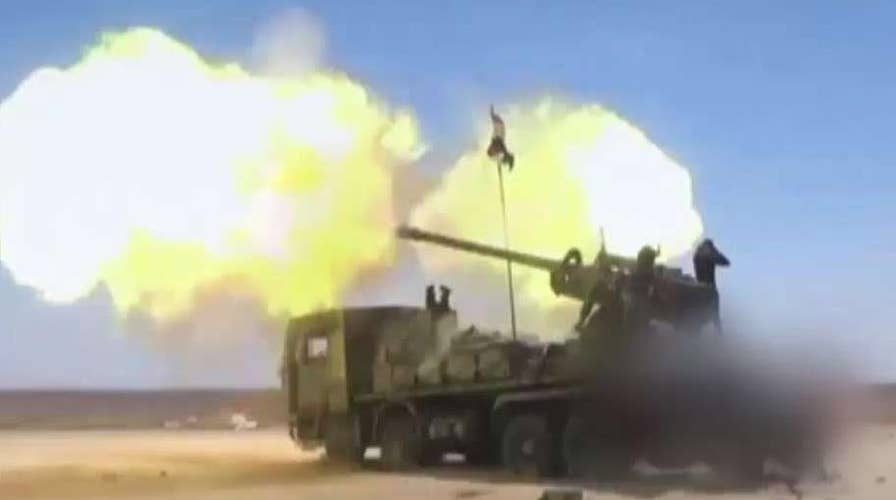White House orders Pentagon to pull troops from Syria
Sen. Lindsey Graham slams President Trump's plans to remove ground forces from Syria; John Roberts reports from the White House.
President Trump’s order Wednesday to remove all 2,000 U.S. troops from Syria should be seen and celebrated for what it is: a great victory over the ISIS terrorist group and the fulfillment of his pledge not to do nation-building.
Trump campaigned for the White House on an unambiguous pledge to crush ISIS. Just one week into his presidency he ordered the Pentagon to develop a plan to “demolish and destroy” the group. Then U.S. and allied forces did just that.
Our militaries obliterated a jihadist force that sprung out of the vacuum of the Syrian civil war and once grew so large as to approach the outskirts of Baghdad in neighboring Iraq.
President Trump’s choice of retired Marine Gen. James Mattis as secretary of defense was pivotal. Mattis freed U.S. forces who had been fighting with one arm tied behind their backs, and contributed to major battlefield gains without a massive invasion.
Of course, ISIS stragglers still exist. Remember that Japanese holdouts were still coming out of the jungle to surrender long after World War II ended? But ISIS is kaput as an organized military and governing force in Syria and Iraq.
Now it is time to bring our military home. President Trump correctly tweeted: “We have defeated ISIS in Syria, my only reason for being there during the Trump Presidency.”
Of course, hawks will be upset. Sen. Lindsey Graham, R-S.C., the Senate’s leading interventionist, tweeted: “Withdrawal of this small American force in Syria would be a huge Obama-like mistake.”
Now it is time to bring our military home. President Trump correctly tweeted: “We have defeated ISIS in Syria, my only reason for being there during the Trump Presidency.”
Trump’s top military adviser, Joint Chiefs of Staff Chairman and Marine Gen. Joseph Dunford, tried to move the goal posts on the president earlier this month remarking: “With regard to stabilization, we have a long way to go.” He then claimed that only 20 percent of needed local forces in Syria had been trained.
But “stabilization” was never Trump’s goal, nor should it have been. Syria remains gripped in civil war, with government forces directed by Syrian President Bashar Assad consolidating steady gains.
Yes, it is lamentable that Assad is in cahoots with Iran and Russia. Certainly, President Trump was right to strike Syria with two major cruise missile attacks after the regime used chemical weapons.
However, replacing Assad would require a major Iraq-style war and inflict deep suffering on a people who have already been devastated by eight years of bloody conflict. Furthermore, anti-Assad forces have proved incapable of achieving lasting military victory and some are worse than Assad, including Al Qaeda elements.
Former President Obama famously said that “Assad must go,” but that was never our choice to make. And Assad has proved canny and resilient.
We should now engage with the villainous Assad, using statecraft to minimize his misconduct. We should strike him again if he crosses red lines over the use of chemical weapons or threatening our Middle East allies politically or militarily, but also create an avenue for postwar reconstruction for him that does not necessarily run through Moscow or Tehran.
As for President Trump, he has now placed in the history books a clear alternative to the neoconservatives’ incompetent never-ending war, as demonstrated in Afghanistan and Iraq. He knows that when we deploy our military we should accomplish a clear goal with strong force and then get out.
Perhaps the most important achievement in President’s Trump’s withdrawal will be the least heralded. By slowly moving away from fighting in backwaters stretching from Afghanistan to Libya, he can refocus more of our military power on America’s chief threat in the world: China.
While the massive national security complex in Washington longs for confrontation against familiar Middle Eastern foes and Russia, Trump, like the public, knows instinctively that our biggest challenge lies across the Pacific.

